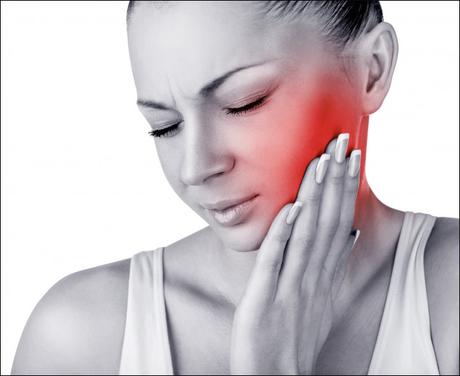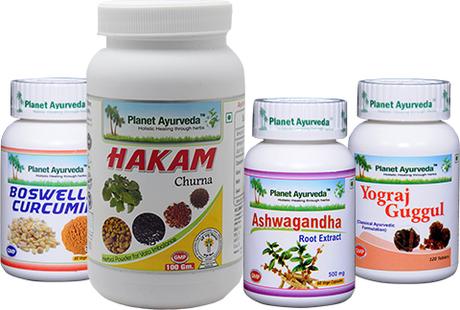Abstract
Trigeminal Neuralgia is a pain disorder that affects the trigeminal nerve. This is a disease of the facial nerve supply. This disease is rare and it mostly affects older adults, especially women. The nervous system is a highly complex part of the body that coordinates its action and sensory information by transmitting signals from and to different parts of the body. There are many nervous disorders and trigeminal neuralgia is one of them. The pain episode of Trigeminal Neuralgia occurs and then may not return for years and also can be triggered by emotional shock, facial treatment, and routine activities involving facial movement etc. Further in this article we are going to discuss trigeminal neuralgia and its Ayurvedic management through herbal remedies.

Introduction
Trigeminal neuralgia is a rare, extremely painful nervous condition that affects the face. This condition is a long term pain disorder that affects the trigeminal nerve which is responsible for sensation in the face and motor functions such as biting and chewing. The pain felt by the individual is often extremely severe and debilitating. The term trigeminal is coined for a nerve originating in the cranium i.e. the top of the face, and divides and runs symmetrically on both sides of the face and that nerve is known as trigeminal. Its branches connect the eyelids, the eyes, the cheeks and the nose, and then the upper and finally the lips and the lower jaw. Therefore this disease mainly affects the face.
Ayurvedic Aspect of Trigeminal Neuralgia
In Ayurveda, we can correlate this disease with Anantavata. Acharaya Sushuruta said that when tridosha (Vata, Pitta and kapha) vitiate the Manya or greeva (the region of either sides of neck) due to excessive weeping, anger, rough and cool items eating, fasting or taking less food then it will produce severe intolerable pain at neck, in the eyeball, in the frontal region, root of the nose and in temporal region. At the end it will cause lockjaw, eye diseases and shivering of jaws (Ganda parshava kampa).
Etiology/Causes
The exact cause of Trigeminal Neuralgia is not known. But researchers thought that it can occur as a result of aging or it can be related to the damage to the myelin sheath that protects certain nerves or it can be related to multiple sclerosis. Some doctors also said that it can also be caused by a tumor compressing the trigeminal nerve.
Clinical features/Signs and Symptoms
The patient of Trigeminal neuralgia can experience one or many of the following symptoms
- An intense shooting pain
- Attacks of pain for hours or even days
- A burning sensation
- Constant pain in one side of the face
- Pain in lips, jaws and gums
- Pain in eyes and forehead
- Pricking pain in the face
- Pain attacks get frequent and more severe with time
Triggering Factors
Various factors contribute to the aggravation of this condition or its symptoms in an individual. Such factors are called triggering factors. The following factors are considered as triggers for trigeminal neuralgia
- Touching the face
- Chewing gums
- Eating
- Drinking
- Brushing the teeth
- A cold wind
- Laughing
- Smiling
- Frowning
- Excessive talking
- Washing the face
- Putting on makeup
- Repeatedly eating
Diagnosis
This disease is mainly diagnosed based on the description of the pain that include type and location of the pain and also the triggering factors. Then a doctor may conduct some imaging and scanning tests to diagnose this disease further. Some neurological examinations may reveal or confirm this disease.
Complications
If this condition is left untreated then the complications include loss of sensation in the face.
Ayurvedic Management of Anantavata
In Ayurveda it can be manageable through nasya yoga, anjana yoga, lepa yoga and some oral remedies
- Nasya yoga: we can use Snehan nasya, ksheeri sarpi (Ghee prepared from milk), dhanwantari taila, ksheera bala taila, Shadbindu taila, Anu taila.
- Anjana yoga: We can use Chandrodaya varti and nagarjuna varthi.
- Lepa yoga (External application): We can use the Paste of surajmukhi beej + suryamukhi swaras, Sarivadi lepa and haridra lepa.
-
Oral remedies: For orally we can use the following classical medicines.
- Shirashooladi Vajra Ras
- Ekaangaveer Ras
- Sudhanidhi Ras
- Godanti Bhasma + Sphatika Bhasma
- Saptamrit Loha
- Vata Vidhwansan Ras
- Triphala Ghrita
Herbal Remedies for Trigeminal Neuralgia
Planet Ayurveda is a leading company of herbal products. They manufacture various herbal remedies by using the standardized extracts of potent herbs and also they are manufactured by using the ancient time-tested formulas. This company is GMP and internationally certified. This company offers the following herbal remedies for Trigeminal Neuralgia
- Boswellia Curcumin
- Hakam Churna
- Ashwagandha Capsules
- Yograj Guggul


Products Description
1. Boswellia Curcumin
This is a poly herbal formulation of Planet Ayurveda. This is an effective combination of anti-inflammatory herbs such as Shallaki (Boswellia serrata) and Curcumin (Curcuma longa). This is a very potent herbal remedy for trigeminal neuralgia. It reduces the inflammation and pain from the affected area. Curcumin is an excellent pain reliever herb hence helpful in reducing pain which is the prominent sign of trigeminal neuralgia. It is also very beneficial in joint pain.
Dosage: 1 capsule twice a day after meals with plain water.
2. Hakam Churna
This is classical herbal formulation. This formulation is a combination of great herbs that are potent to fight against digestive disorders. This churna has an ability to retrieve the normal digestion by alleviating the Vata dosha which is also responsible for neurological disorders. This is also known as Tridoshic rasayan. This formulation is made from herbs like Chandershoor (Lepidium sativum), Kalonji (Nigella sativa), Methi (Trigonella foenumgraecum) and Ajwain (Trachyspermum ammi). It is very useful in painful joints, stiff joints, morning stiffness, back pain and all other pain disorders.
Dosage: 1 tsp twice a day with lukewarm water before meals
3. Ashwagandha Capsules
This is a single herbal formulation. It is a great nervine tonic that enhances physical as well as mental health. These capsules are made from the standardized extracts of Ashwagandha (Withania somnifera). This herb is very useful in this condition as it pacifies vata dosha which is the reason for all neurological disorders. Vata dosha governs all the movement in the body including the movement of nerve impulses throughout the nervous system. Ashwagandha is useful in debilitating conditions like fatigue, stress, anxiety, palpitation and nervous breakdown.
Dosage: 1 capsule twice a day after meals with plain water.
4. Yograj Guggul
This Ayurvedic classical formulation is best for the treatment of vata dosha. It is used in various musculoskeletal disorders. It pacifies vata dosha and helps in alleviating the symptoms of this condition such as pain. It is prepared from potential herbs such as Chitrak (Plumbago zeylanica), Pippali (Piper longum), Vidang ( ), Pushkarmoola Inula racemosa) etc. It is traditionally used in Ayurveda for painful joints and muscles. It rejuvenates muscle strength.
Dosage: 2 tablets twice a day after meals with plain water
Conclusion
At last we concluded that this disease is well managed by the Ayurvedic herbs. The herbal products of Planet Ayurveda are very safe and chemical and preservative free. These products mainly work on alleviated Vata dosha that is responsible for all neurological disorders and hence helpful in treating trigeminal neuralgia. For further information you can visit on www.planetayurveda.com

